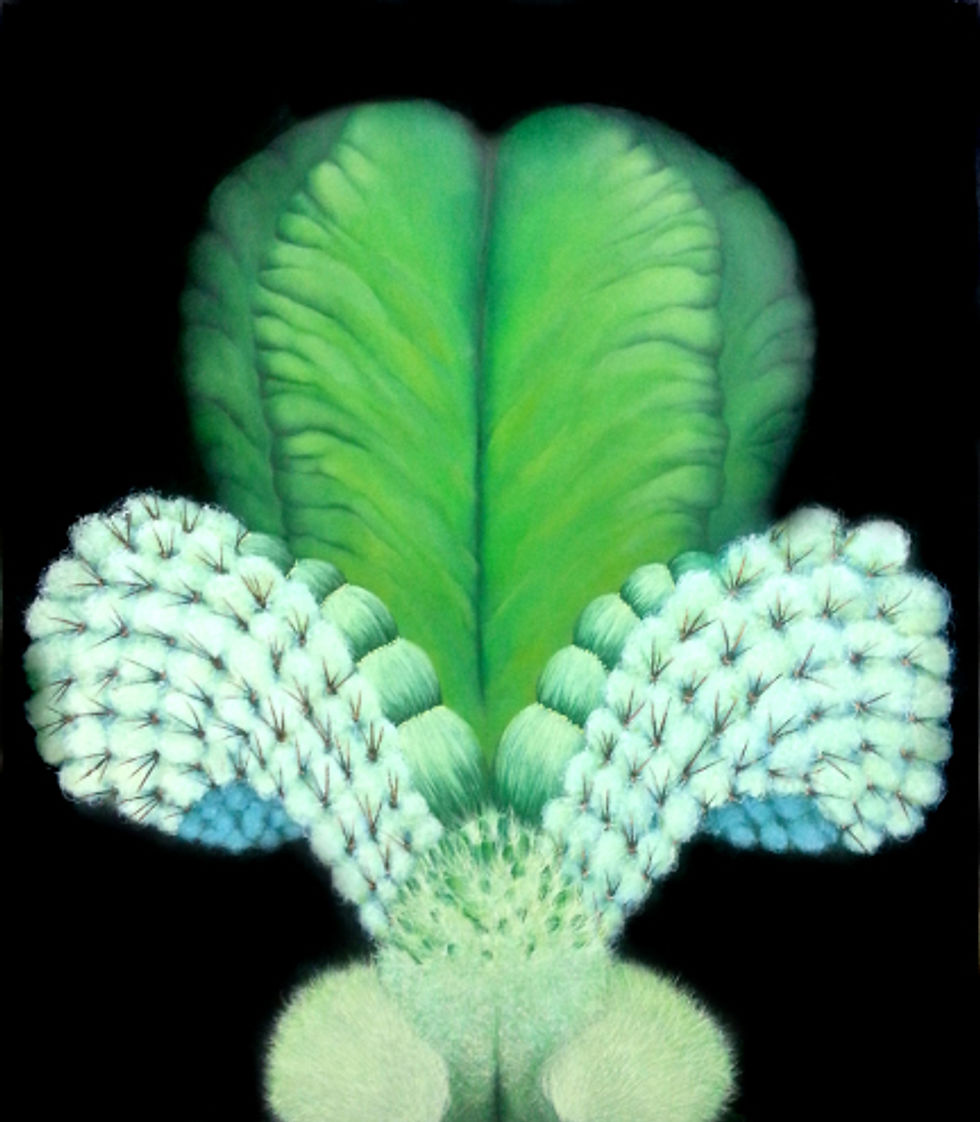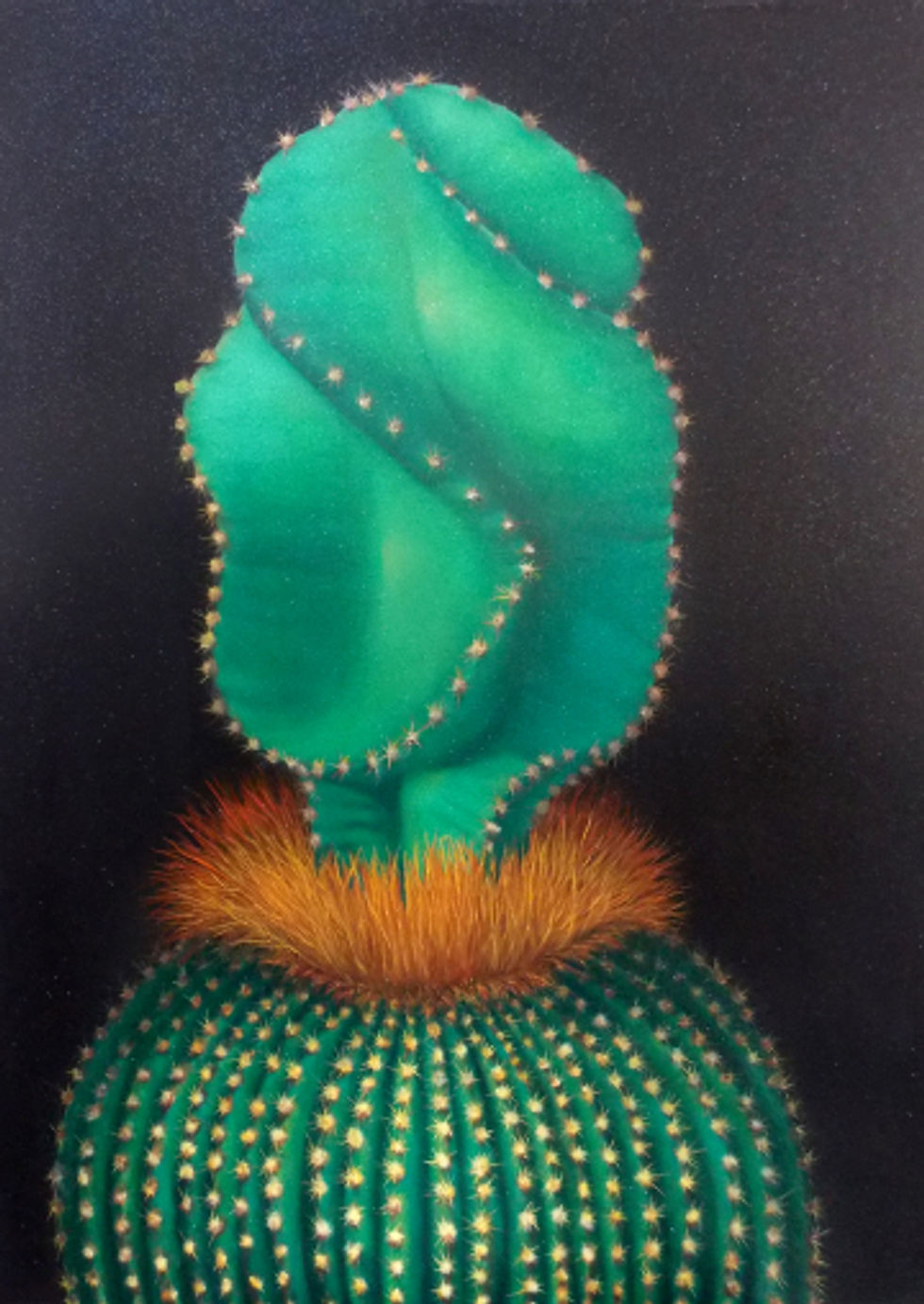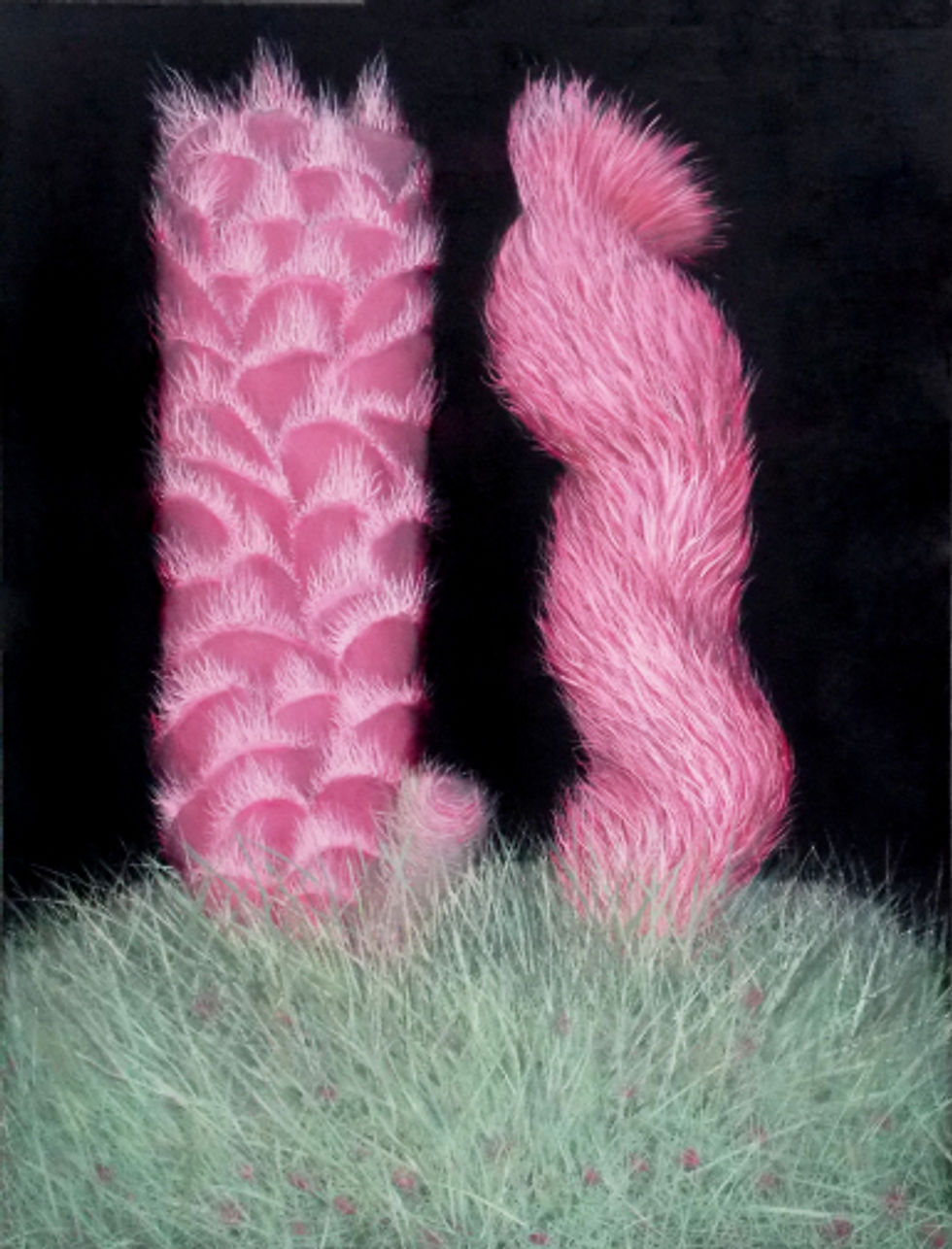Δέσποινα Κωνσταντίνου – Despina Konstantinou
- topikapcafe
- Feb 19, 2019
- 3 min read
Born in Serres, works and lives in Thessaloniki, Greece.
Studies:
2003-2008 School of Visual and Applied Arts of the Aristotle University of Thessaloniki.
Solo exhibitions:
2018 Astrolavos Gallery, Kolonaki, Athens, “Flowers and Thorns”.
2016 Cube Gallery, Patras, “Bitten”
2012 CK Art Gallery, Nicosia, Cyprus.
2012 Astrolavos Gallery, Kolonaki, Athens, “prinTemps”.
2011 Gallery Papaptzikou, Veria, “Woman”.
Two or three man show
2018 Gallery Papatzikou, Veria, Greece.
Ochra Blue Gallery, Limnos Island, Greece.
Group exhibitions:
Over 60 group exhibitions in Greece, Italy, Cyprus, Istanbul, Mexico.
Η Δέσποινα Κωνσταντίνου σπούδασε ζωγραφική στην Σχολή Καλών Τεχνών του Αριστοτέλειου Πανεπιστημίου Θεσσαλονίκης με καθηγητές τους Γ. Τσακίρη και Κ. Μορταράκο. (2003 – 2008). Ζει και εργάζεται στη Θεσσαλονίκη.
Έχει πραγματοποιήσει 5 ατομικές εκθέσεις και έχει συμμετάσχει σε πολυάριθμες ομαδικές εκθέσεις στην Ελλάδα και το εξωτερικό. Έργα της βρίσκονται σε ιδιωτικές συλλογές στην Ελλάδα και το εξωτερικό.
Ατομικές Εκθέσεις:
2018 Γκαλερί Αστρολάβος Δεξαμενή, Κολωνάκι, Αθήνα, “Flowers and Thorns”.
2016 Cube Gallery, Πάτρα, “Bitten”
2012 CK Art Gallery, Λευκωσία, Κύπρος.
2012 Γκαλερί Αστρολάβος Δεξαμενή, Κολωνάκι, Αθήνα, “prinTemps”.
2011 Γκαλερί Παπατζίκου, Βέροια, “Woman”.
Two or three man show
2018 Gallery Papatzikou, Βέροια.
2018 Ochra Blue Gallery, Λήμνος.
Instagam: konstantinoudespina

Genesis 2, Oil on canvas, sparkling finish, 70×60 cm, 2016

Harmony, oil on canvas, sparkling finish, 80×60 cm, 2018

Flirt 2, oil on canvas, sparkling finish, 40×30 cm, 2017

Throne, oil on canvas, sparkling finish, 80×95 cm, 2016

Jaune Fleur, Oil on canvas, sparkling finish, 80×60 cm

Seduction 2, oil on canvas, sparkling finish, 40×50 cm
Cacti is the new theme of D. Konstantinou’s paintings – a subject that is loaded with the prominent significance it imparts to it and the skillful way of processing it with bright colors, purity, detailed drawing and distinct diligence in the depiction of different textures, initially recalling color lithographs of plants and flowers of excellent precision and elegance, illustrated in 19th century natural history publications.
With the assemblage of various real species, she finally creates new, fantastic species-mutated cactus hybrids, which monumentally occupy the painting surface, creating a highly dreamlike, metaphysical atmosphere where, with tension and surreal, often playful and subversive mood, the erotic element arises.
With references to the poem “The Loves of the Plants” by the English philosopher, poet and naturalist Erasmus Darwin (1731-1802), the works of Despina Konstantinou introduce us to a peculiar, colorful and vibrant, plant world in straight match and strife with the human one, where sexuality holds the leading role.
The cacti are transformed into phallic and pubic symbols, combinations and encounters between them come to convey the impression of immediate physical experience and fleshly contact, to critically approach the stereotypical rivalry of the two sexes, to open themselves to the areas of hermaphroditism, bisexuality and fantasies, to conjure relations of power, manipulation, domination and subordination, to alter allegorically the flooded inner juices on their hard and thorny envelope, to carry the urge of desire, sensuality and the joy of union, to illustrate the feelings of pain and enjoyment, violence and pleasure.
The black color, on the back, reinforced with silver glitter, defines the surrounding space, referring to the universe, the cosmic vacuum, the birth, the mystery of the beginning of creation.
Giannis Bolis
Art historian
Οι κάκτοι είναι το νέο θέμα της ζωγραφικής της Δέσποινας Κωνσταντίνου –ένα θέμα που φορτίζεται από την εμφαντική σημασία που του αποδίδει και τον δεξιοτεχνικό τρόπο που το επεξεργάζεται με λαμπερά χρώματα, καθαρότητα, λεπτομερή σχεδίαση και ξεχωριστή επιμέλεια στην απόδοση διαφορετικών υφών, ανακαλώντας, αρχικά, τις, εξαιρετικής καταγραφικής ακρίβειας και κομψότητας, έγχρωμες λιθογραφίες με θέμα φυτά και λουλούδια που εικονογραφούσαν εκδόσεις φυσικής ιστορίας τον 19ο αιώνα.
Με τη συναρμογή διάφορων πραγματικών ειδών, δημιουργεί νέα, φανταστικά είδη-μεταλλαγμένα υβρίδια κάκτων, τα οποία καταλαμβάνουν μνημειακά τη ζωγραφική επιφάνεια, υποβάλλοντας μια άκρως ονειρική και μεταφυσική ατμόσφαιρα όπου, με ένταση και σουρεαλιστική, συχνά παιγνιώδη και ανατρεπτική, διάθεση, αναδύεται το ερωτικό στοιχείο.
Με αναφορές στο ποίημα Οι Έρωτες των Φυτών (The Loves of the Plants) του Άγγλου φιλόσοφου, ποιητή και φυσιοδίφη Erasmus Darwin (1731-1802), οι συνθέσεις της Δέσποινας Κωνσταντίνου μας εισάγουν σ’ έναν ιδιότυπο, πολύχρωμο και ζωντανό, φυτικό κόσμο, σε ευθεία αντιστοιχία και επαλληλία με τον ανθρώπινο, όπου η σεξουαλικότητα κατέχει τον πρωταγωνιστικό ρόλο.
Οι κάκτοι μεταμορφώνονται σε φαλλικά και ηβικά σύμβολα, οι μεταξύ τους συνδυασμοί και συναντήσεις έρχονται να μεταδώσουν την εντύπωση της άμεσης σωματικής εμπειρίας και σαρκικής επαφής, να προσεγγίσουν κριτικά τη στερεοτυπική αντιπαλότητα των δύο φύλων, να ανοιχθούν στις περιοχές του ερμαφροδιτισμού, της αμφισεξουαλικότητας και των φαντασιώσεων, να αποτυπώσουν σχέσεις εξουσίας και δύναμης, χειραγώγησης, κυριαρχίας και υποταγής, να αντιπαραθέσουν αλληγορικά το πλημμυρισμένο χυμούς εσωτερικό τους στο σκληρό και ακανθώδες περίβλημά τους, να μεταφέρουν την ορμή της επιθυμίας, τον αισθησιασμό και την ηδυπάθεια της ένωσης, να εικονοποιήσουν τα αισθήματα του πόνου και της απόλαυσης, της βίας και της ηδονής.
Το μαύρο χρώμα, ενισχυμένο με ασημί γκλίτερ, ορίζει τον περιβάλλοντα χώρο, παραπέμποντας στο σύμπαν, το κοσμικό κενό, την γέννηση, το μυστήριο της απαρχής της δημιουργίας.
Γιάννης Μπόλης
Ιστορικός της τέχνης



Comments